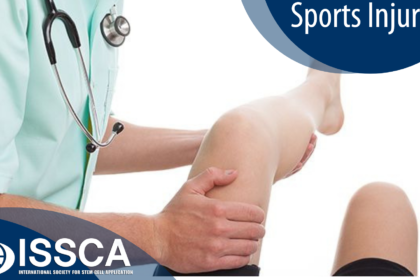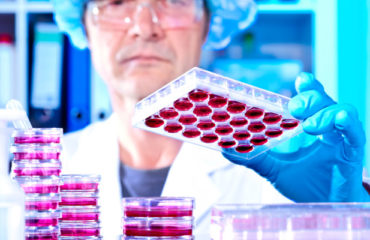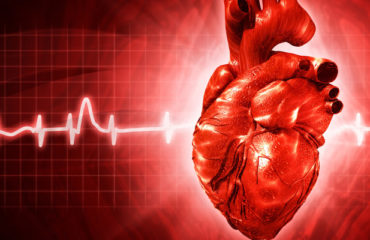
As physicians, we are constantly dealing with sports injuries. While they are typically not seen as life-threatening with high chances of recovery, they could potentially cause further problems down the line for the patient. Sports injuries can also take months to heal and getting patients back on their feet can take a lot of time, effort and money, which can be frustrating for patients who want to get back to playing football every weekend or for those who have a skiing holiday booked in the next month.
Recently, there has been a massive surge in the use of stem cells as an alternative treatment to common sports injuries. This article aims to outline the benefits and risks attached to using stem cells and how this alternative treatment may help patients who are suffering from common sports injuries.
What Are The Most Common Sports Injuries?
We are constantly treating sports injuries on a regular basis. Some of the most common sports injuries doctors typically deal with are:
Ankle Sprain
An ankle sprain occurs when the ligaments in the ankle are stretched and eventually torn due to twisting or falling onto the foot. Ankle sprains are common among athletes and sports enthusiasts, however, if left untreated, the ankle can weaken, making it more vulnerable to further damage. This leads to long term problems such as chronic ankle pain, arthritis, and ongoing instability.
A sprained ankle can be easily diagnosed when we see displays of swelling, bruising, stiffness and pain when we attempt to touch or move the ankle.
Groin Pull
A groin pull is basically a groin strain. Strains occur when the muscles are overstretched, moving in directions that are not normal for them or pulled too forcefully or suddenly. This leaves them torn and damaged and results in tenderness and bruising in the groin and inner thigh area. This injury is common in athletes that play sports which require a lot of quick side-to-side movements.
A groin pull can be easily diagnosed after a thorough physical examination of the symptoms and possible tests such as x-rays and MRI’s.
Hamstring Strain
A hamstring strain occurs when the three muscles in the back of the thigh are overstretched from movements such as hurdling and kicking the leg out sharply. As these muscles are naturally tight and susceptible to sprains, it can take from six to twelve months to heal and are vulnerable to recurring injuries. Poor or lack of stretching are the likely causes of a pulled hamstring.
Shin Splints
Shin Splints is an inflammation of the muscles in the lower leg when they are overworked and stressed. Shin splints are often found in athletes that engage in sports that require a lot of running, dodging or quick stops and starts.
Knee injury: ACL tear
An ACL knee injury is a tear or sprain of the ligament that holds the leg bone to the knee. Sudden stops or changes in direction can tear the ACL and make that dreaded “pop” sound. Almost immediately, the knee will swell, feel unstable and be too painful to bear weight. This injury is common in athletes that engage in sports such as soccer, basketball, and downhill skiing.
ACL tears are commonly seen as a severe sports injury and can be traditionally treated with rehabilitation programs and surgery to strengthen or completely replace the torn ligament.
Knee injury: Patellofemoral Syndrome
Patellofemoral Syndrome occurs when repetitive movements of the kneecap (patella) are made against the thigh bone (femur) which damages the tissue. This knee pain is common among young adults and can be caused by a number of factors such as weakness in the thigh or buttock muscles, tight hamstrings, short ligaments around the kneecap or alignment problems through the feet.
Tennis Elbow (epicondylitis)
Tennis Elbow is common for athletes that play sports such as tennis or golf that require the player to ‘grip’ tightly and repetitively for an extended amount of time. This results in the ligaments of the forearm becoming strained and inflamed, making it painful to make wrist or hand motions.
What Are The Traditional Treatment Options & Management Strategies For Sports Injuries?
Traditional treatment methods and strategies for treating mild sports injuries such as sprains and strains can be done at home. Traditional advice given by doctors can include taking rest, applying ice to reduce the swelling and dressing the injury with compression bandages to support and assist healing. Nonsteroidal anti-inflammatory drugs (NSAIDs) such as ibuprofen may also be prescribed to help reduce swelling and to relieve pain.
Moderate severity injuries may be traditionally treated with immobilization strategies such as the use of crutches or a cast brace to assist the ankle to heal for the first few weeks. This may be followed with rehabilitation exercises to strengthen the ankle and prevent stiffness and future problems.
Severe sports injuries such as knee injuries are traditionally treated with surgery or rehabilitation programs to replace or restore the torn ligaments or muscles. This also goes for those patients who experience persistent problems after months of nonsurgical treatment.
Whatever the severity level of the sports injury, the healing process can take up to several months before the muscle restores to its natural condition. Injuries can also leave muscles and ligaments permanently weakened and susceptible to further injury.
Is Stem Cell Therapy An Option For Treating Sports Injuries?
The use of stem cells to treat sports injuries are becoming more popular due to its ability to grow new blood vessels that facilitate faster and better healing, decrease or prevent inflammation and release proteins (cytokines) that can slow down tissue degeneration and reduce pain. Sports injuries that include damage to tendons, ligaments, muscles, and cartilage are reported to be seeing the best results from stem cell therapy.
Dr. Bill Johnson, MD of Innovations Medical sees stem cell therapy as a revolutionary alternative to painful surgery and long recovery and states that,
“Patients who undergo stem cell therapy for their sports injury report a reduction in their painful symptoms and increase range of motion and increased mobility. Stem cell therapy helps to quickly reduce joint inflammation, and many patients see improvements in 1 to 2 days. Anti-inflammatory results of the procedure can last for 2 to 3 months and many patients see a gradual improvement in their condition over time.”
Even celebrity athletes such as Peyton Manning and Ryan Tannehill have used stem cell treatment in conjunction with traditional treatments with success. Stem cells are placed directly into the joint via surgical application or injection to aid quicker healing and promote the growth of cells needed to restore strength and flexibility in muscles and ligaments.
However, using stem cells as an alternative method to treat sports injuries is still a controversial subject and is very much still debated among medical professionals. Research is still undergoing to show whether or not stem cell therapy is the best solution. Critics of this therapy argue the fact that stem cell therapy doesn’t work any better than a placebo and that there is no clear evidence that this type of therapy is safe. Unwanted side effects can include swelling and pain and if stem cells are used from other sources or manipulated in any way, this can result in a higher risk of developing tumors.





Whoa partner…not much of the above has documented Science
Who are you kidding?
Many physicians have used “ prolotherapy “ with elite athletes and others for several years. There are RCT’s verifying the benefit of prolotherapy in chronic low back pain, knee osteoarthritis and tennis elbow. It is the so called “ first regenerative therapy”. The theory and proof for this therapy is very similar to stem cell therapy.
Bill
If you research the biologic probability of success and research with “ stem cells” , you will see there are good reasons to pursue more research and use of this therapy.
Bill
If you research the biologic probability of success and research with “ stem cells” , you will see there are good reasons to pursue more research and use of this therapy.